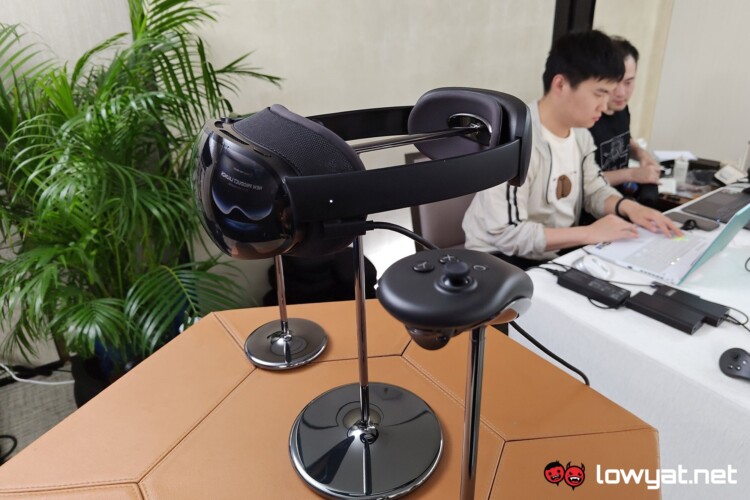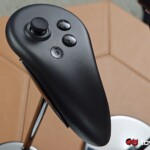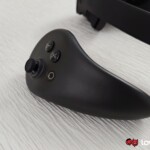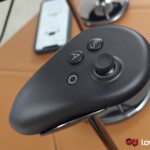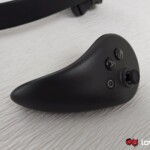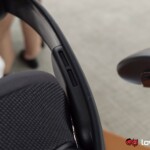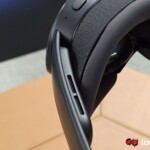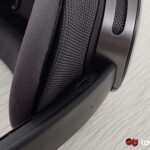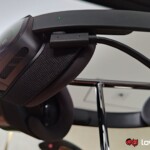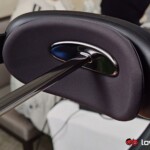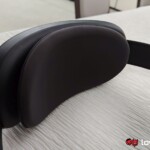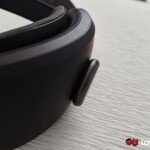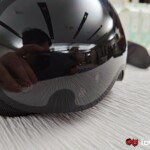Following the announcement event yesterday, we were given a short guided tour of what the user experience of the Play for Dream MR headset is like. There’s a lot that will be said here, the major caveat is that the headset during the product experience session is still running pre-release software. As such, a lot of the features that should be here are not. Company reps assure us that it will be delivering all of its promised features by the October launch window.
With that in mind, lets start with a few peculiarities, especially with the controller. One thing you’ll notice about the pair here is that it is lacking both the halo that houses its own set of sensors, as well as straps to keep them from flying off your hand. The former can be explained by the hand tracking from the headset itself. As for the latter, the justification is that the use of these controllers are optional and are not part of the core experience with the Play for Dream MR headset. Speaking of these controllers, the user experience with them is basically the same with just about any other VR headset that have come before.
The home page is set up very similarly to the Apple Vision Pro. The company did not immediately provide screenshots for me to use, but if you remember the report on the fruit headset’s Travel mode, that’s a pretty accurate representation, minus the Apple-specific app logos.
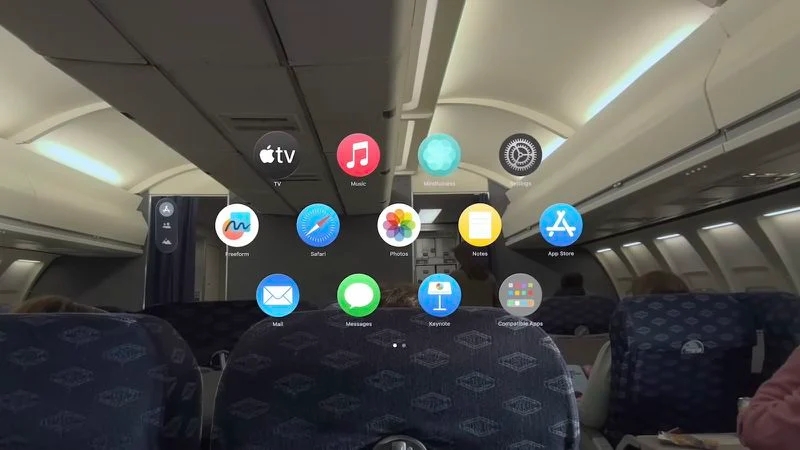
There also looks to be quite a lot of features on the Play for Dream MR headset that are, er, heavily inspired by what was presented as being possible or available on the aforementioned Vision Pro. This includes the ability to record 3D spatial video, as well as finger gesture tracking which, unfortunately, is among the features that are not available during this demo session. What is available though is the ability to set up a virtual desktop (limited to two windows during the demo), with sounds from each, if any are playing, getting louder the closer you get to it in the virtual space.
Speaking of which, along the arms of the Play for Dream MR headset are build in speakers, which would in theory make additional audio equipment unnecessary. There isn’t a 3.5mm audio jack for you to plug in a pair of cans, though Bluetooth remains an option. But back to the built-in ones, these do simulated 7.1 channels, though the session wasn’t exactly long enough to determine if it’s done well.
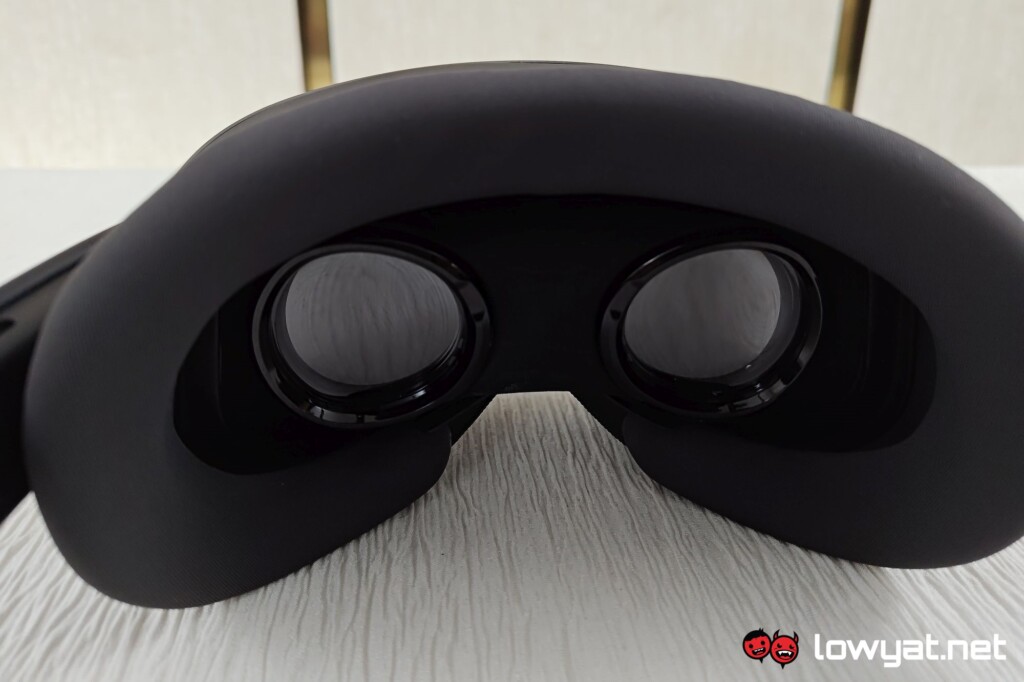
Similarly, the demo session wasn’t really long enough to determine if the Play for Dream MR will end up being quite uncomfortable after awhile. For what it’s worth, I did not feel nauseous throughout the duration of the demo which is, granted, not necessarily applicable to everyone. For what it’s worth, it sports a 90Hz refresh rate, which should be the standard for such hardware these days.
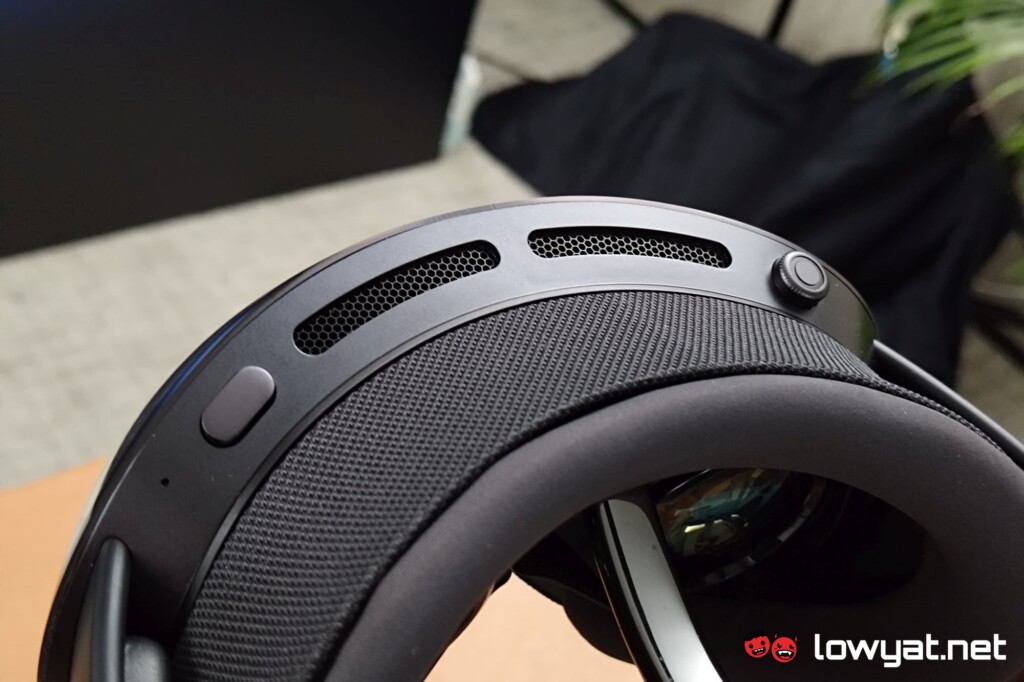
Completing the hardware description of the Play for Dream MR headset is the dial at the back that adjusts the tightness of the band, with he built-in battery pack also to be found here. In front, on the top right corner is a wheel that can be used for volume adjustment, as well as switching from letting you see the VR environment to the AR one. You have to press it to activate the second function every time, which does take some getting used to. And finally, on the bottom half of the left arm is the USB-C charging port.
Without the release version of the software though, it’s difficult to see if the Play for Dream MR headset stacks favourably against others like it already in the market. If one is optimistic with what the company has promised will be available at launch, you could say that this is the more affordable alternative to the Apple Vision Pro, before the bitten fruit releases its own. But for now, four months can be either a lot of time or not enough at all in equal measure to achieve the goal.

